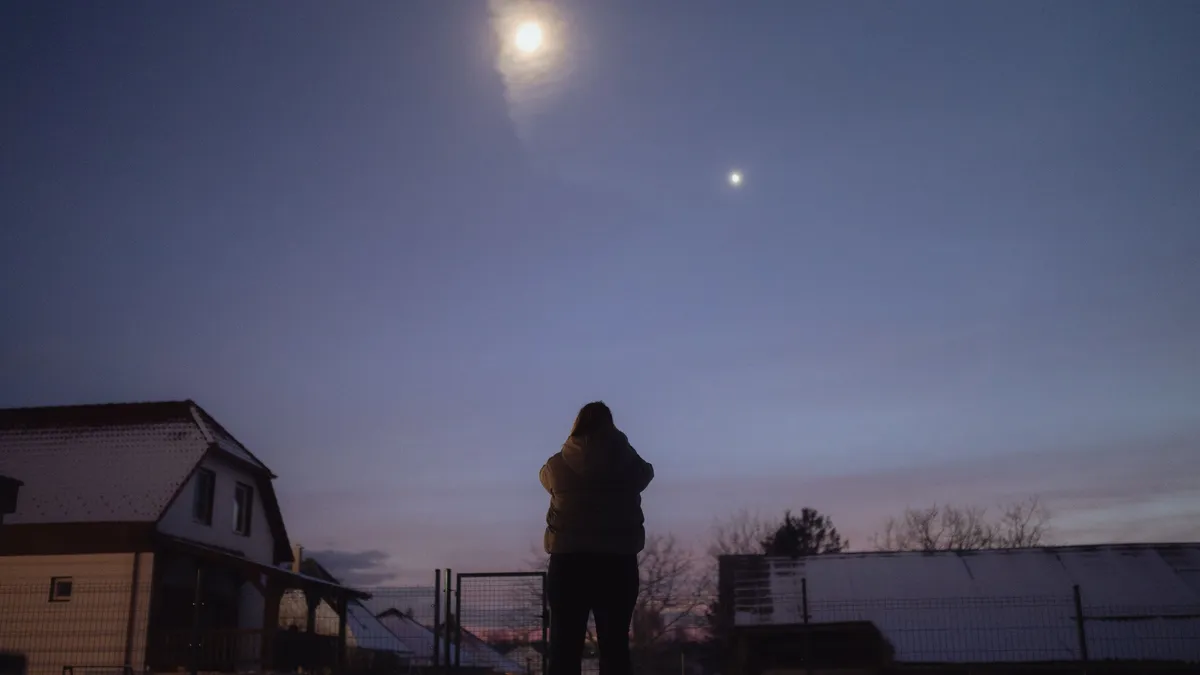
On Sunday evening (October 5), stargazers will have a remarkable opportunity to witness one of the most stunning sights in the night sky: the ringed planet Saturn. This celestial event will be enhanced by the presence of the moon, which will be just 24 hours shy of becoming this year's Harvest Full Moon. As noted in previous articles on Space.com, Saturn does not immediately stand out to the naked eye, especially when compared to the dazzling brilliance of other planets such as Venus or Jupiter, or the fiery hue of Mars. Instead, it appears as a bright yellowish-white star.
Starting around 8 p.m. local daylight time, look about a quarter of the way up from the eastern-southeast horizon. You will be able to see Saturn, even if you initially mistake it for a bright star. On this evening, Saturn will be conveniently positioned just below the moon, making it an easy target for those searching for the solar system's iconic ringed planet. If the skies are clear, this is a perfect opportunity to gather with friends and neighbors to witness two of the best sights in the night sky.
Begin your evening by admiring the moon. Although it won’t be completely full, it will be an impressive 98.5% illuminated and radiantly bright. One of the most notable features you can spot on the moon is Tycho, a prominent lunar impact crater located in the southern highlands, named after the renowned Danish astronomer Tycho Brahe. Tycho is characterized by bright rays of material that extend across much of the moon's lower limb.
Another significant lunar feature is Copernicus, which lies slightly northwest of the center of the moon's Earth-facing hemisphere. This crater is easily identifiable whenever it is sunlit, and like Tycho, it is distinguished by its brilliant rays radiating from its center. Under optimal lighting conditions, the rays from Tycho and Copernicus dominate the lunar surface, making it challenging to locate other features.
After marveling at the moon, it’s time to focus your telescope on Saturn. At an arm's length, your clenched fist roughly measures 10 degrees, meaning Saturn will be positioned less than a quarter of a fist (approximately 2.2 degrees) below the moon. Saturn's iconic ring system has been narrowing since 2017, with the rings appearing edge-on from our perspective on March 23 of this year. Following this event, the angle of inclination gradually increased to 2.2 degrees by May 5, but the rings were still largely invisible since the sun illuminated the north side.
On May 6, sunlight began to illuminate the south side of the rings, allowing them to reappear as a narrow, bright line bisecting Saturn’s disk. For this Sunday, any telescope equipped with an eyepiece magnifying at least 30x will reveal the rings, though they will still appear as a thin bright line due to their current inclination of just 1.4 degrees.
Patience is key, as the visibility of Saturn's rings will improve in the coming years. This past spring, Saturn reached what can be described as the autumnal equinox of its orbit, with its north pole tilted forward and the ring plane appearing edge-on toward the sun. A quarter of its 29.46-year orbit later, in April 2032, Saturn will experience its winter solstice, when the southern hemisphere, including the southern face of the rings, will be most exposed to sunlight. At that time, the rings will be tilted at a maximum angle of 26.75 degrees toward us, referred to as the maximum Saturnicentric latitude.
Therefore, a year from now—and particularly two years from now—the rings will be more visible, providing a stunning sight that will astonish even seasoned observers when viewed through a moderate or large telescope.
As you share this experience with your friends, remember to mention a fascinating fact: the moon and Saturn are not close to each other in space, despite their proximity in the sky. The moon will be located approximately 227,000 miles (365,000 km) from Earth, while Saturn lies more than 3,500 times farther away at a staggering 797 million miles (1.283 billion km).
Join astronomer Joe Rao, an instructor and guest lecturer at New York's Hayden Planetarium, as he writes about astronomy for various publications, including Natural History magazine and Sky and Telescope. Don't miss this chance to appreciate the beauty of the universe!